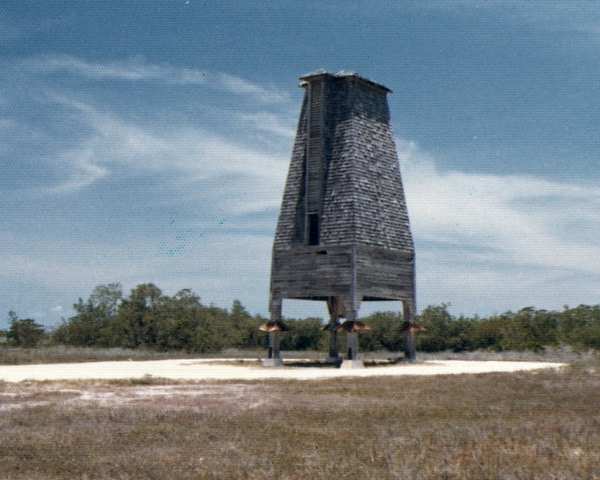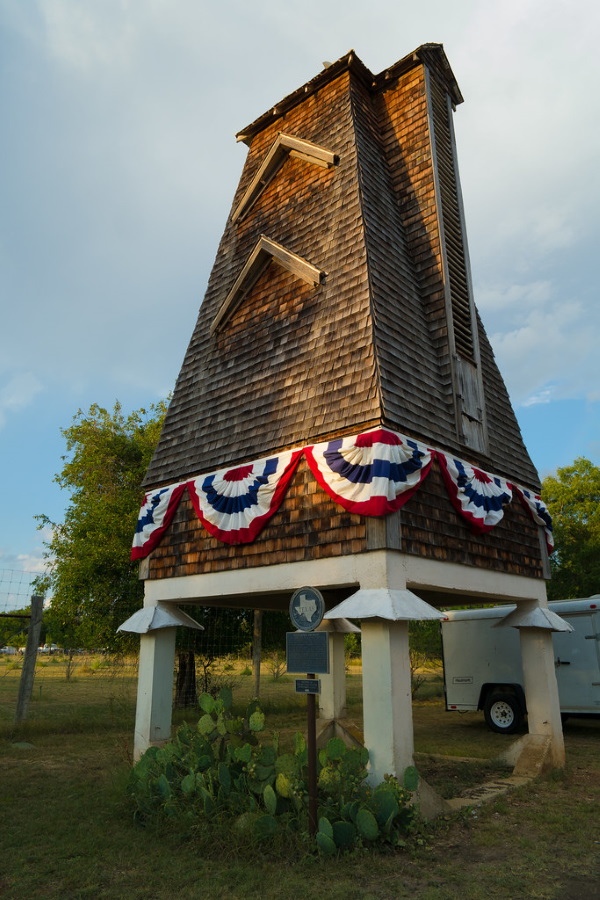
A century ago, a prescient Texan doctor constructed 30-foot-tall bat roosts of his own patented design to encourage flocks of winged furry insect-eaters to stick around.
Going Batty
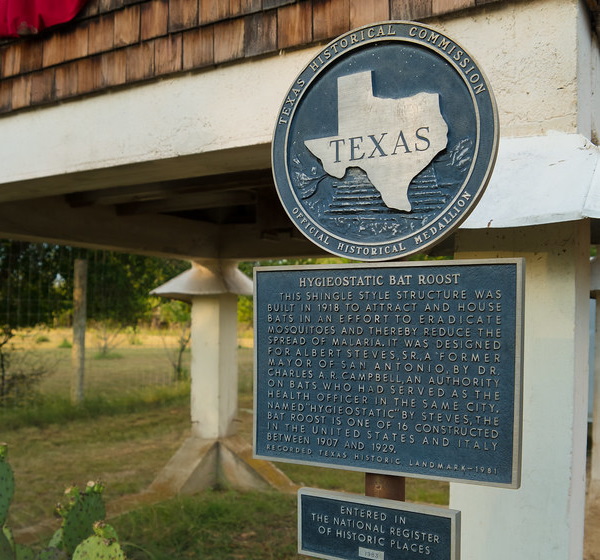
Been bitten by the bat bug? You’re not the only one. Medical researchers around the globe are putting their collective noses to the high-tech grindstone in an unprecedented effort to fight the COVID-19 pandemic. Epidemiologists overwhelmingly suspect the novel coronavirus responsible for so much misery originated in bats, jumping to human beings via an intermediate host animal – likely a pangolin. (images via Nan Palmero)

Research conducted in the aftermath of the 2003 SARS outbreak led to the revelation that bats host a wide variety of different coronaviruses. A widely disseminated (and since debunked) video of a young Chinese woman dining on bat soup at a high-end restaurant resulted in an unflattering limelight being shone upon both the diner and the dined. But really, are bats all that bad? The answer is complicated – and bats most definitely have their pros and cons… and condos!
Raise Flaps
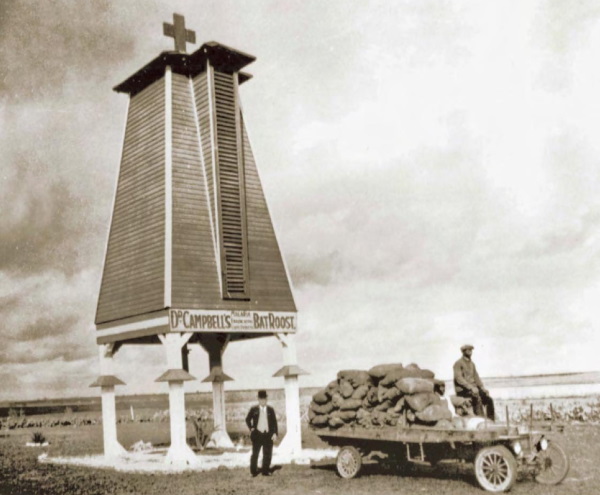
History places Charles Augustus Rosenheimer Campbell, Sr., MD in both the “pro” and “condo” camps. Campbell (1863 – 1931) hailed from San Antonio, Texas and in later life became both the president of the San Antonio Academy of Medicine and the city’s official bacteriologist. He definitely had his work cut out for him as San Antonio was situated on swampy, low-lying land – a perfect breeding ground for malaria-carrying mosquitoes. Campbell’s proposed solution was in equal parts simple and ingenious: construct a perfect breeding ground for bats, who would gobble up the mosquitoes and, as a bonus, produce valuable guano (bat poop) that could be sold as fertilizer. (image via History along the Way: Stories beyond the Texas Roadside Markers)
In Bat Company
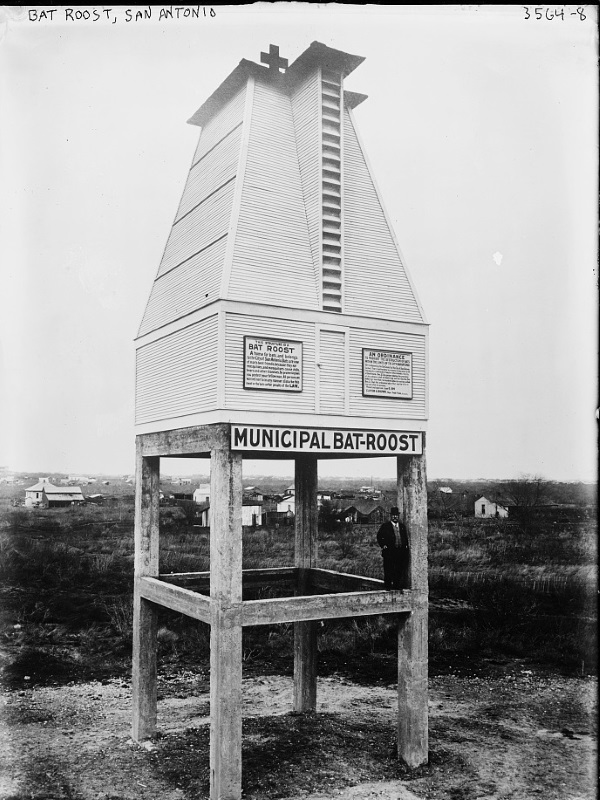
Campbell’s “bat roosts” employed the same basic blueprint as traditional bat boxes but on a vastly expanded scale – large flocks of bats need plenty of roosting space, doncha know! His concept also facilitated the regular harvesting of guano via a raised base that allowed carts or wagons to roll underneath a trap door in the floor. The resulting “Malaria-Eradicating Guano Producing Bat Roost” featured weather-resistant shingle siding and stood about thirty feet tall. Campbell erected several of the structures in and around San Antonio beginning in 1911 and, wonder of wonders, the number of malaria cases in their vicinity soon began to decrease. You can see Campbell himself in the photo above, dwarfed by his creepy yet crafty creation. (image via Library of Congress)
Roost Never Sleeps
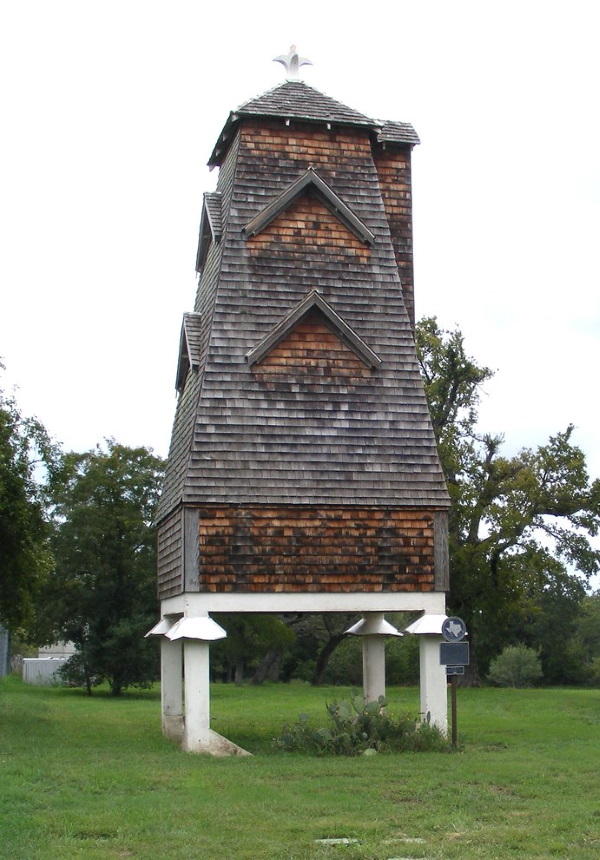
The implicit promise of Campbell’s bat roost was noted by one Albert Steeves Sr., a former mayor of San Antonio who had retired to his ranch near Comfort, Texas. In 1918, Steeves contracted with Campbell to construct a bat roost on his farm, roughly 1.5 miles east of Comfort. Steeves dubbed the edifice the “Hygieostatic Bat Roost”, the name being derived from the Greek words “hygiea” (health) and “stasis” (standing). Over a century later this structure is indeed still standing, having been faithfully maintained by several generations of Steeves’ descendants. (image via John W. Schulze)
In the market for some un-natural pest control? Check out The Verminators: 7 Amazing Amusing Pest Control Signs!
